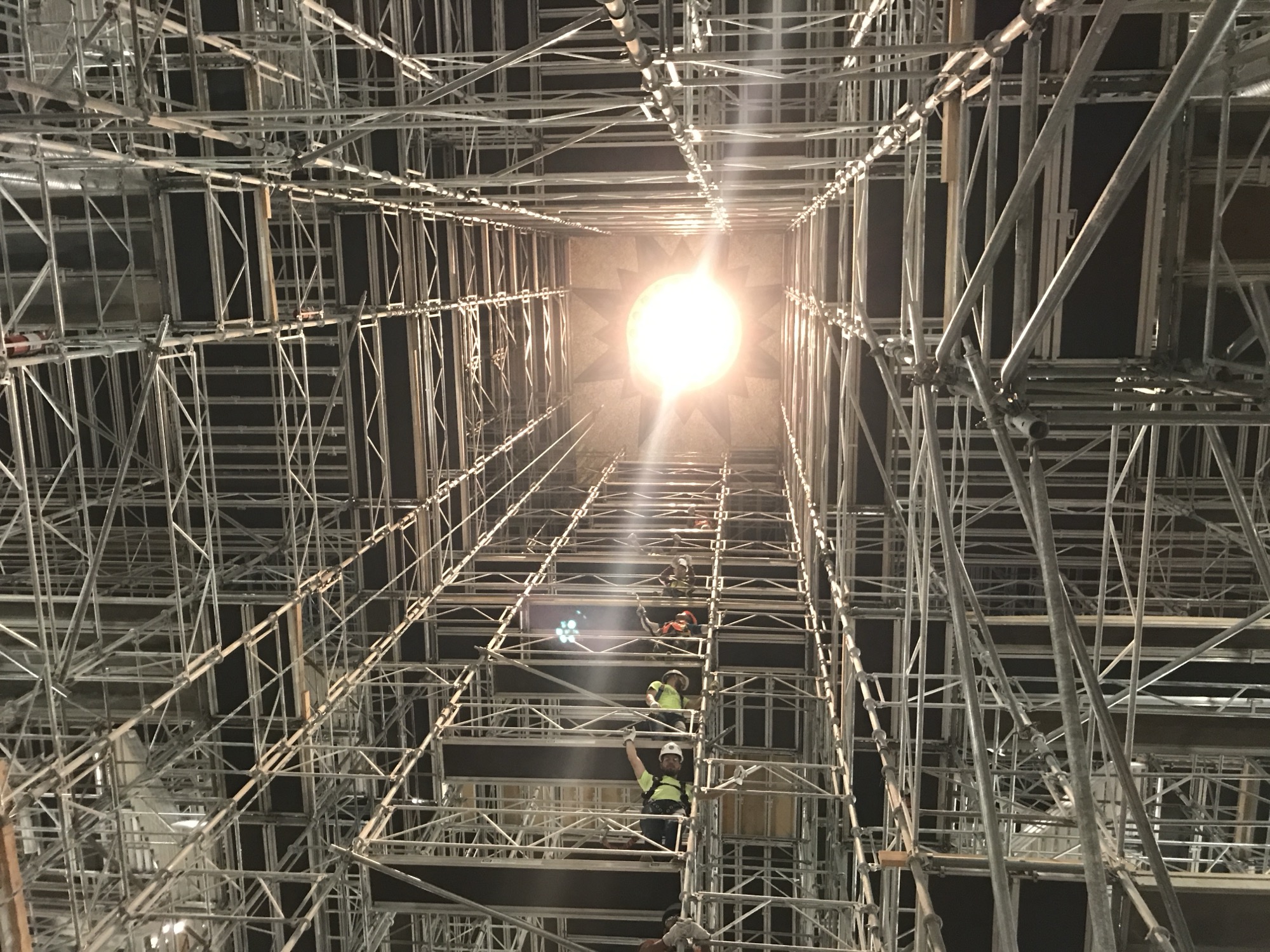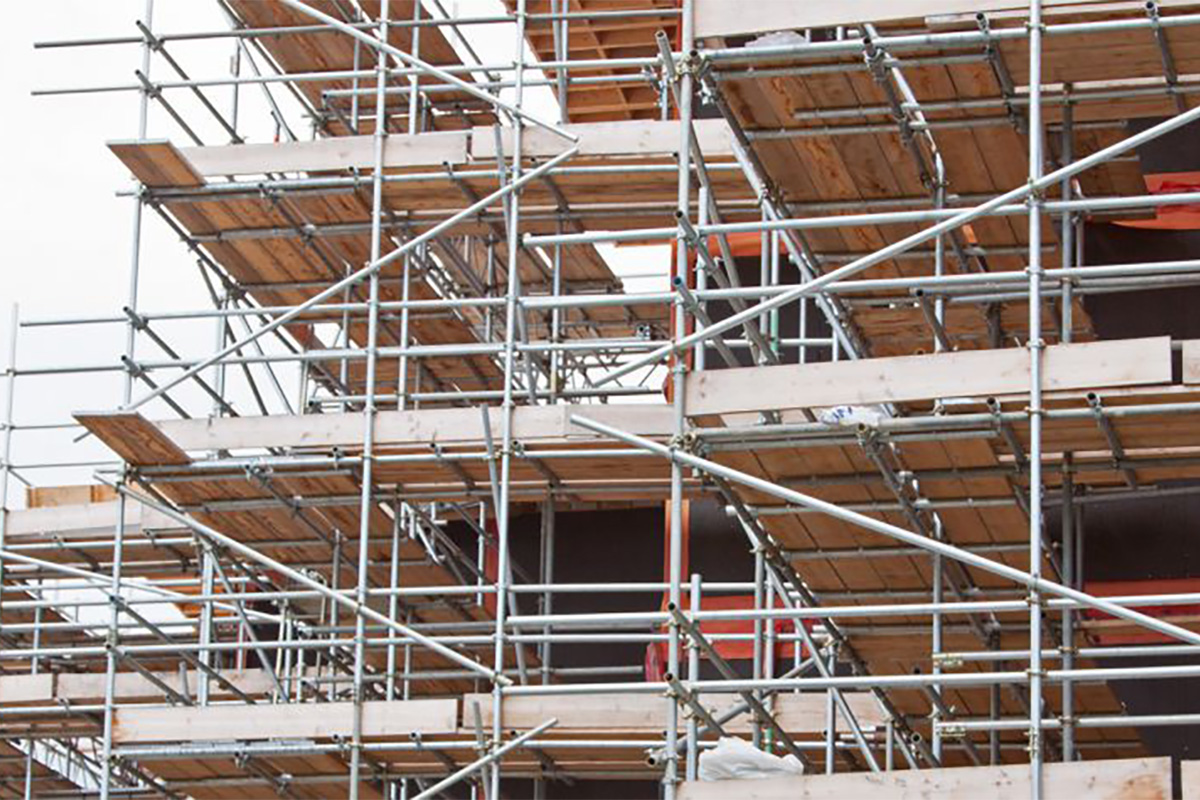Temporary Roof Scaffolding to Ensure Safe Working Conditions During Projects
Temporary Roof Scaffolding to Ensure Safe Working Conditions During Projects
Blog Article
A Comprehensive Guide to the Necessary Features of Scaffolding in Modern Building
The landscape of contemporary building and construction increasingly counts on reliable scaffolding systems that prioritize security, performance, and innovation. As projects grow in complexity, understanding the vital functions of scaffolding ends up being essential for ensuring employee safety and security and optimizing project timelines. This overview discovers numerous sorts of scaffolding, highlights vital safety and security attributes, and checks out product innovations that add to efficiency and sustainability. The effects of these aspects prolong far past plain building methods, prompting a more detailed look at just how they influence overall job success and employee well-being.
Kinds Of Scaffolding
Although scaffolding systems can differ widely in style and application, they generally come under a number of distinctive categories that accommodate various construction requirements - Scaffolding. One of the most typical kinds consist of supported scaffolding, put on hold scaffolding, and rolling scaffolding
Sustained scaffolding contains platforms sustained by a framework of poles, which supply a stable and elevated functioning surface. This type is commonly used for tasks that need substantial elevation, such as bricklaying or exterior painting.
Suspended scaffolding, on the other hand, is used for jobs needing access to high elevations, such as cleaning or fixing structure exteriors. This system hangs from another structure or a roof, permitting employees to reduced or elevate the system as required.
Rolling scaffolding functions wheels that enable easy movement across a job website. It is specifically valuable for jobs that need frequent relocation, such as indoor operate in big areas.
Each type of scaffolding is designed with details applications in mind, making certain that building and construction jobs can be accomplished efficiently and effectively. Recognizing these groups is vital for choosing the appropriate scaffolding system to fulfill both task demands and website conditions.
Key Safety Attributes
Security is paramount in scaffolding systems, as the possible dangers associated with functioning at heights can lead to significant mishaps if not effectively handled. Key safety and security functions are vital to make certain the wellness of employees and the stability of the construction website.
First and foremost, guardrails are critical. These barriers give a physical protect versus falls, significantly minimizing the risk of severe injuries. Additionally, toe boards are commonly used to avoid tools and products from diminishing the scaffold, protecting workers listed below.
Another vital component is the usage of non-slip surface areas on platforms. This function boosts grip, particularly in damaging weather, thereby reducing the chance of falls and slides. In addition, access ladders must be safely placed to promote safe entrance and departure from the scaffold.
Regular evaluations and maintenance of scaffolding systems are likewise important. These inspections ensure that all components remain in great problem and operating appropriately, resolving any wear or damage promptly.
Lastly, proper training for all personnel involved in scaffolding operations is important to guarantee that they comprehend security procedures and can identify potential hazards. Scaffolding. Collectively, these attributes develop a more secure working setting and substantially alleviate dangers related to scaffolding
Material Innovations
Advancements in product scientific research have considerably influenced the scaffolding sector, improving both security and efficiency in modern building and construction. The introduction of high-strength steel and light weight aluminum alloys has actually transformed typical scaffolding systems. These products are not only lighter, making them easier to set up and carry, but additionally supply exceptional load-bearing capacities. This leads to scaffolding structures that can sustain greater weights while minimizing the danger of collapse.
Additionally, cutting-edge composite materials, such as fiberglass-reinforced plastics, have actually become practical choices. These materials are immune to deterioration and environmental destruction, hence prolonging the life-span of scaffolding systems, particularly in rough climate condition. Making use of such materials adds to lower maintenance expenses and ensures constant efficiency with time.


Style Considerations
Thinking about the complexities of contemporary construction jobs, reliable additional hints scaffolding layout is vital to ensuring both performance and safety and security. Design factors to consider must include numerous factors, consisting of lots capacity, height, and the details requirements of the building website. Each project presents special obstacles, necessitating a versatile strategy to scaffolding additional resources systems that can adapt to varying conditions.
Architectural honesty is crucial; as a result, designers must calculate the loads that the scaffolding will support, consisting of employees, products, and tools. The choice of materials plays a vital duty in making certain the scaffolding can withstand these loads while staying lightweight and go now long lasting. In addition, the layout has to allow for easy access and egress, facilitating the smooth movement of personnel and materials.
Safety attributes, such as guardrails and non-slip surface areas, should be included to decrease threats of crashes. In addition, the format has to take into consideration the surrounding setting, consisting of nearby structures and potential threats. By attending to these style considerations, building and construction companies can enhance the effectiveness of scaffolding systems and advertise a much safer working environment, inevitably contributing to the overall success of the task.
Maintenance and Inspections
The performance of scaffolding systems prolongs beyond first design and execution; continuous maintenance and normal evaluations are vital to guaranteeing their continued efficiency and safety throughout the period of a job. Regular examinations ought to be conducted by qualified personnel to determine any kind of indications of wear, damages, or instability that might endanger the integrity of the scaffolding.
Upkeep protocols must include routine checks of architectural components, such as installations, frames, and planks, making certain that all elements stay complimentary and secure from rust or various other damage. Additionally, the performance of safety and security attributes, such as guardrails and toe boards, should be evaluated to make certain compliance with safety laws.
Paperwork of all inspections and upkeep activities is important for liability and regulatory compliance. An organized strategy to record-keeping not only aids in tracking the condition of the scaffolding but likewise supplies needed proof in the occasion of a case.
Ultimately, establishing an extensive maintenance and evaluation routine will substantially minimize the threat of crashes and boost the total security of the building website. By prioritizing these methods, building managers can safeguard workers and copyright the task's honesty.

Conclusion
In verdict, the vital attributes of scaffolding in contemporary building and construction include a series of essential aspects, consisting of diverse kinds, essential safety and security mechanisms, product innovations, and thoughtful layout considerations. Highlighting safety with guardrails and non-slip surface areas, alongside innovations in materials like high-strength steel, improves both efficiency and sustainability. Furthermore, normal maintenance and evaluations are essential for guaranteeing architectural honesty and safety on building websites, ultimately assisting in reliable project execution and advertising the health of employees.
The landscape of modern building progressively counts on reliable scaffolding systems that focus on performance, technology, and safety and security.Improvements in product science have considerably influenced the scaffolding industry, boosting both safety and security and effectiveness in contemporary building. In general, these material innovations not only boost the efficiency and security of scaffolding systems but also straighten with the market's push in the direction of sustainability, as several contemporary products are designed to be extra ecologically friendly.
Considering the intricacies of contemporary construction tasks, efficient scaffolding design is paramount to making certain both performance and safety.In verdict, the vital features of scaffolding in modern-day building encompass a variety of crucial components, including varied types, key security mechanisms, product innovations, and thoughtful layout considerations.
Report this page